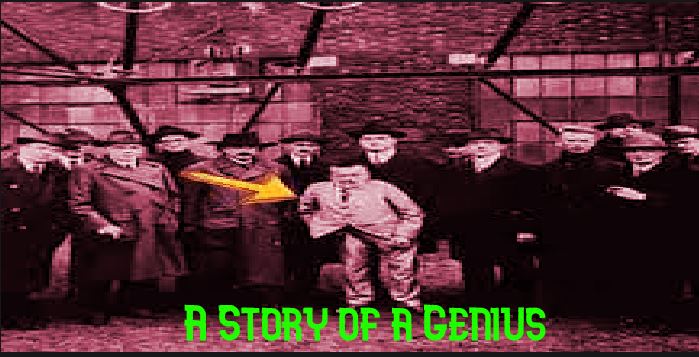In an era rapidly accelerating towards the age of Artificial Intelligence, a profound truth emerges: mere academic qualifications, without the bedrock of deep skill and profound subject knowledge, will leave individuals adrift. The imperative of our time is not merely to adapt to AI, but to transcend it – to cultivate a level of understanding and insight that allows us to think beyond its capabilities. This isn’t just a philosophical musing; it’s a practical necessity, beautifully illustrated by a legendary tale from the annals of industrial history.
Imagine the bustling, colossal manufacturing plant of Henry Ford’s pioneering automobile company. It was a time of unprecedented demand for cars, a golden age of production where every minute counted. Orders poured in, and the relentless hum of machinery was the heartbeat of progress. Cars had to be delivered swiftly, precisely, and without delay.
Then, disaster struck. One of the plant’s massive, indispensable generators, the very heart of the operation, sputtered and fell silent. A critical mechanical fault had brought the entire assembly line to a grinding halt. Panic rippled through the factory floor.
Immediately, the company’s cadre of skilled engineers was summoned. These were experienced professionals, well-versed in the intricacies of the machinery. Such faults, while disruptive, were not uncommon, and they had a track record of diagnosing and rectifying problems. It was, for them, a routine yet significant challenge. They meticulously examined the generator, consulted blueprints, and ran diagnostic tests. They tried every conventional solution, every trick of the trade they knew.
But this time, something was different. The generator remained stubbornly inert. Days bled into a week, then more. The engineers, despite their collective expertise and tireless efforts, were at a loss. The problem lay beyond their combined knowledge, a hidden anomaly that defied their understanding. The financial losses mounted with each passing hour of idleness, and the backlog of pending orders grew into an overwhelming mountain. The very future of the production line hung in the balance.
In his growing desperation, Henry Ford, a man known for his pragmatism and resourcefulness, reached out to his old friend, a man whose reputation bordered on the mythical: Charles Proteus Steinmetz. Steinmetz was not just an engineer; he was revered as “the magician of the engineering branch,” a true genius whose insights into electricity were unparalleled. The very mention of his name brought a mix of awe and, for the Ford engineers, a tinge of professional shame. How could an outsider succeed where they, the company’s experts, had failed?
Steinmetz was indeed a genius, a brilliant mind who counted Albert Einstein among his friends. Even Einstein, a titan of intellect, acknowledged Steinmetz’s profound skills and unique expertise. He was a luminary in the scientific world, a pioneer whose theories shaped the nascent field of electrical engineering.
When Steinmetz arrived at the silent factory, there was no fanfare, no grand pronouncements. He simply requested three humble items: a notebook, a pencil, and a piece of cloth. For two full days, he immersed himself in the problem. He didn’t immediately tinker with wires or dismantle components. Instead, he sat quietly, observing both the working generators and the silent, broken one. He listened to the subtle hums, felt the vibrations, and meticulously jotted down observations in his notebook, his mind analysing patterns and anomalies invisible to others. It was a profound act of silent contemplation, a deep dive into the very essence of the machine’s operation.
On the third day, Steinmetz requested a ladder, a measuring tape, and a piece of chalk. With a calm, deliberate air, he ascended the ladder, inserted his hand into a specific part of the generator, and then, with the chalk, made a single, precise mark on its casing.
“Open it here,” he instructed the bewildered engineers, pointing to the chalk mark. “And inside, you will find a coil. Unwind exactly sixteen rounds of wire from that coil.”
The engineers exchanged incredulous glances, barely suppressing their laughter. Unwind wires? After days of complex diagnostics, this seemed absurdly simplistic, almost childish. Yet, out of respect for Ford and Steinmetz’s reputation, they reluctantly complied. They opened the generator, located the coil, and unwound the specified sixteen turns.
“Now,” Steinmetz declared, his voice calm and confident, “start the generator.”
What followed was nothing short of astonishing. With a powerful surge, the generator roared back to life, its familiar hum filling the factory, signalling the resumption of production. A collective gasp of disbelief and relief swept through the plant. Henry Ford, his face beaming, rushed to congratulate his friend. Steinmetz had, with a single chalk mark and a precise instruction, saved the company potentially billions of dollars in lost revenue and production.
Later, Steinmetz sent his bill to the Ford Company: a staggering $10,000. The engineers, who had toiled fruitlessly for days, were outraged. “He barely did anything!” they murmured, their pride wounded. Even Henry Ford, despite his immense relief, was taken aback by the sum.
“Charles,” Ford inquired, “could you please itemise this bill for me? How did you arrive at this amount?”
Steinmetz’s legendary reply echoed through the ages, a testament to the true value of expertise: “One dollar for making a spot with chalk,” he stated calmly, “and nine thousand nine hundred and ninety-nine dollars for deciding where to put that mark.”
Charles Proteus Steinmetz, born in Germany in 1865 and later brought to America, was indeed an electrical engineering prodigy. He worked with Ford and left an indelible mark on the field, contributing groundbreaking theories in areas like hydraulic plants, wireless power circuits, alternating current, and the electric power industry. By the time of his death at the age of 58, he held over 200 patents, each a testament to his inventive genius and profound understanding.
The meaning of this story, particularly in our rapidly evolving world, is crystal clear. In the age of AI, where algorithms can process vast amounts of data and perform complex calculations with unparalleled speed, those who will truly thrive are not merely those with access to information, but those with the deep understanding to interpret it, to diagnose the unseen, and to pinpoint the precise solution that eludes even the most sophisticated machines.
AI can analyse, predict, and automate based on patterns it has learned. But true expertise, like Steinmetz’s, involves intuition honed by years of deep study, the ability to see beyond the obvious, to connect disparate pieces of knowledge, and to identify the singular, critical point of intervention. It’s about the wisdom to know where to put the chalk mark, not just the ability to make one.
This story is an urgent call to action. It inspires us to move beyond superficial learning and generic skills. It challenges us to delve deeper into our chosen fields, to cultivate a profound understanding that allows us to innovate, to solve truly complex problems, and to lead with insight. In a world increasingly shaped by artificial intelligence, our distinct human value will lie in our ability to think, to create, and to understand in ways that AI, for all its power, cannot yet replicate. Be the Steinmetz of your domain; cultivate the expertise that makes you indispensable.







